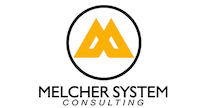Authenticity & Content Provenance Maturity Model
This model outlines the stages an organization moves through to build a resilient, trust-based content ecosystem. It provides a roadmap from ad hoc processes to strategic, trust-first operations.
Authenticity: Proving a piece of content is what it claims to be and has not been deceptively manipulated.
Provenance: Providing a verifiable history of a content asset’s origin, creation, and modification.
Level 1 – Awareness Gap (Ad Hoc)
Authenticity Measures
None. No verification tools are in use. Content can be easily altered with no way to detect it.
Provenance
Metadata (EXIF/IPTC/XMP) is nonexistent, stripped, or ignored. No record of origin or edits.
AI Risk Management
No policy, awareness, or knowledge of threats from AI-created or manipulated content.
Third-Party & Supply Chain
No verification of incoming content from agencies, freelancers, or partners.
People, Governance & Culture
No awareness or training. Creators are not instructed on sourcing or metadata best practices.
Trust Level & Verification
Very Low. End-users and stakeholders cannot reliably confirm if content is real or synthetic.
Key Metrics & Drivers
Driver: First incidents of misinformation, brand damage, or legal issues.
Metric: Number of incidents.
Level 2 – Basic Protection (Reactive)
Authenticity Measures
Basic visible watermarks or copyright notices are applied, often inconsistently.
Provenance
Some metadata is maintained during production but is inconsistent and not checked downstream.
AI Risk Management
Early awareness of AI content risks. Relies on manual, visual review of suspicious assets.
Third-Party & Supply Chain
Basic contractual clauses require authentic content from partners, but no technical verification is performed.
People, Governance & Culture
Informal, “tribal knowledge.” Goal: Begin to formalize authenticity practices.
Trust Level & Verification
Limited. Internal teams rely on personal trust rather than technical proof. No external verification method exists.
Key Metrics & Drivers
Driver: Desire to reduce risk and establish basic control.
Metric: Number of content disputes or takedown requests.
Level 3 – Structured Governance (Proactive)
Authenticity Measures
Adoption of invisible watermarking or digital content fingerprinting tools (e.g., Imatag).
Provenance
Standardized metadata policies are implemented and monitored across key systems like Digital Asset Management (DAM).
AI Risk Management
Clear internal guidelines are established on the use and labeling of AI-generated content.
Third-Party & Supply Chain
Requirements are set for partners to provide specific metadata. High-risk content undergoes spot-checking.
People, Governance & Culture
Dedicated roles are created. Formal training programs are rolled out to creative, legal, and marketing.
Trust Level & Verification
Improved, but internal. Teams can verify content using internal tools, but there is no public-facing verification.
Key Metrics & Drivers
Driver: Need for efficiency and proactive risk management.
Metric: % of new assets compliant with internal policy.
Level 4 – Verified Content Ecosystem (Integrated)
Authenticity Measures
Cryptographic signing of content and active verification systems are standard practice.
Provenance
Implementation of Content Credentials (C2PA) to embed a secure, verifiable origin and edit history into assets.
AI Risk Management
Automated detection and labeling of synthetic content is integrated into content ingestion and creation workflows.
Third-Party & Supply Chain
It is mandated that key partners and agencies provide content with verifiable credentials (e.g., C2PA).
People, Governance & Culture
Cross-departmental governance (Marketing, Legal, PR, DAM) is active. Authenticity is part of employee onboarding and KPIs.
Trust Level & Verification
Enterprise-wide trust. Partners and clients can verify authenticity via secure portals or integrated tools.
Key Metrics & Drivers
Metrics: % of assets with C2PA credentials; Time-to-verify.
Level 5 – Trust-First Organization (Strategic)
Authenticity Measures
End-to-end authenticity is tracked from creation to distribution, often verified by independent third parties.
Provenance
Publicly accessible verification portals (e.g., verify.brand.com) allow anyone to confirm content provenance.
AI Risk Management
Proactive use of advanced detection models. Policies are updated to comply with global regulations (e.g., EU AI Act).
Third-Party & Supply Chain
A fully integrated and technically verified supply chain. Provenance is maintained from the creator’s device to the final campaign.
People, Governance & Culture
A culture of “truth in content” is embedded across the organization, driven from the C-suite and promoted externally.
Trust Level & Verification
High Public Trust. Authenticity is a public-facing brand differentiator, building confidence with customers and regulators.
Key Metrics & Drivers
Driver: Use trust as a competitive advantage.
Metrics: Public trust scores; ROI on transparency campaigns; Revenue from premium licensing.
